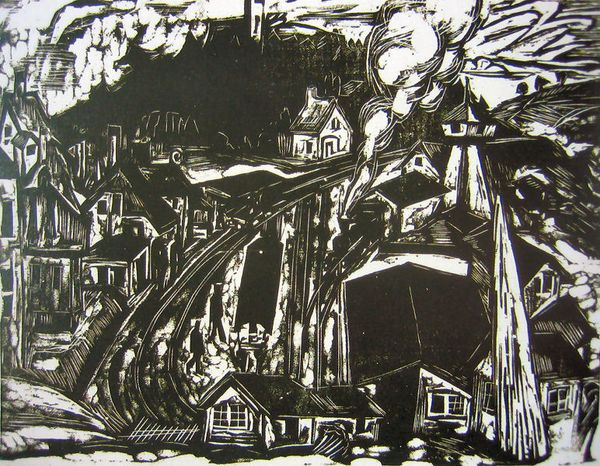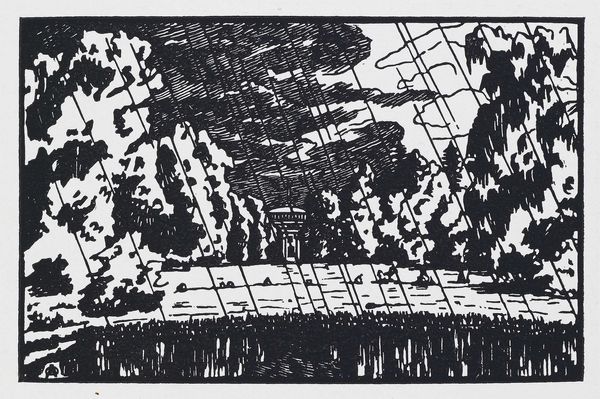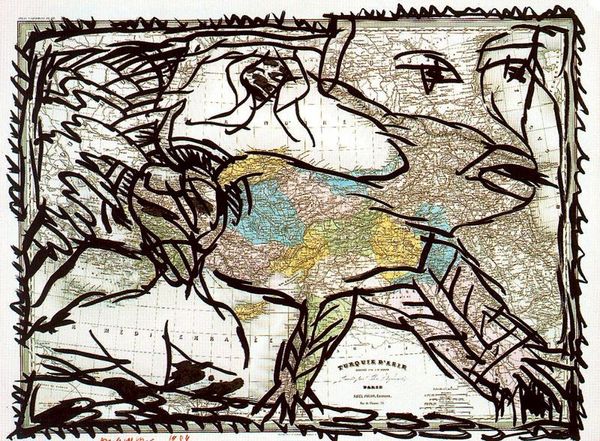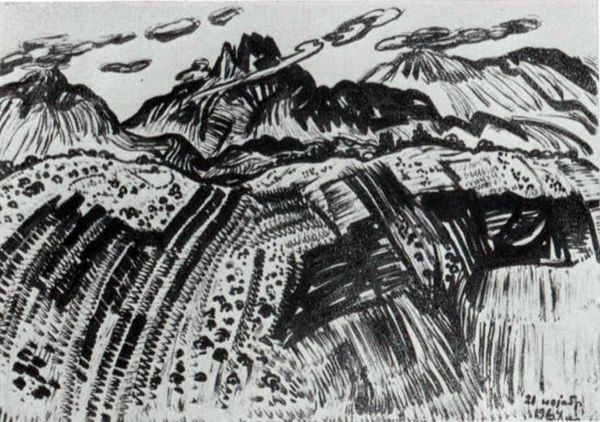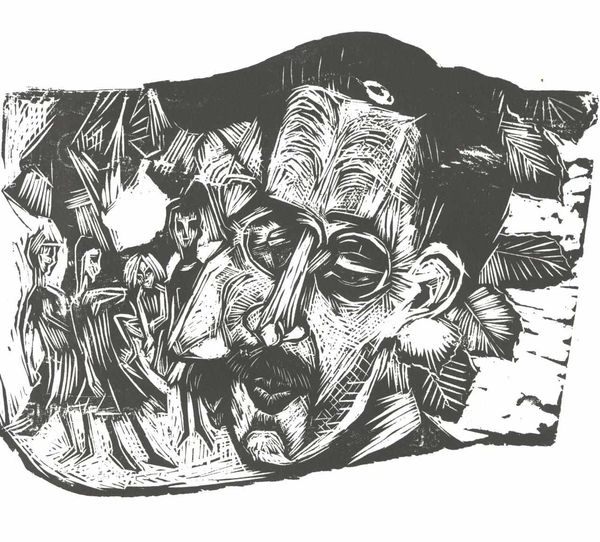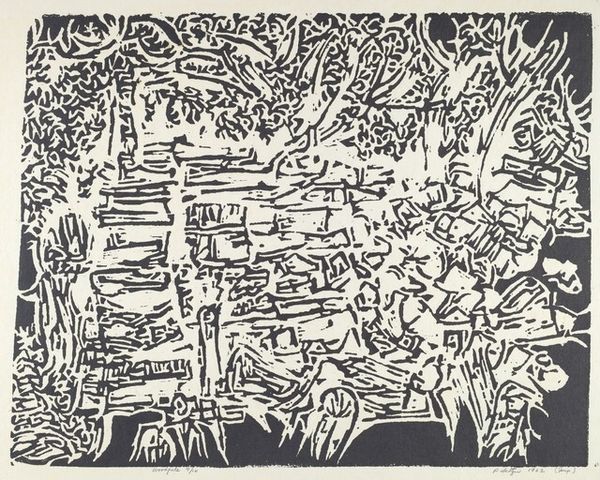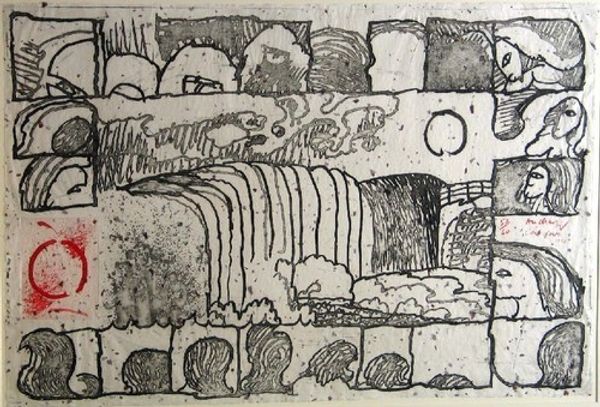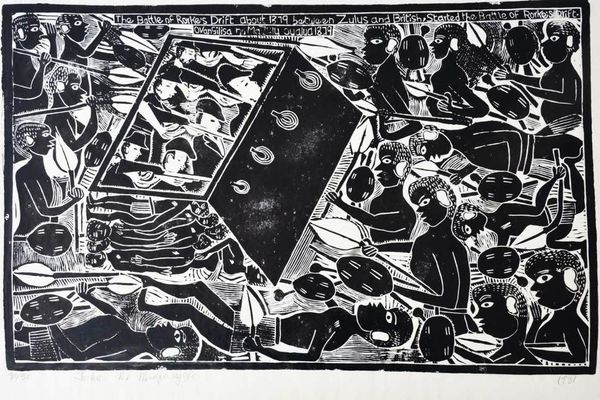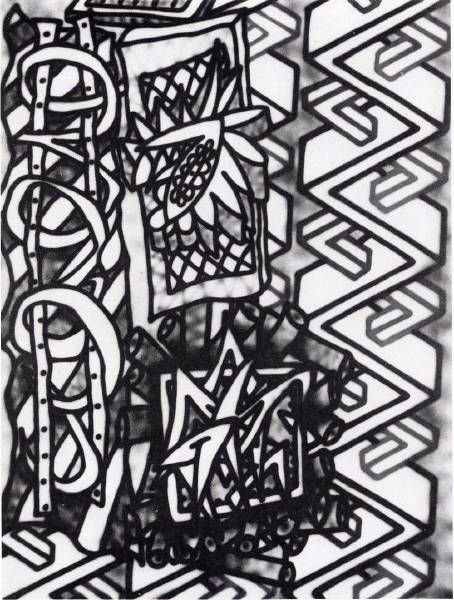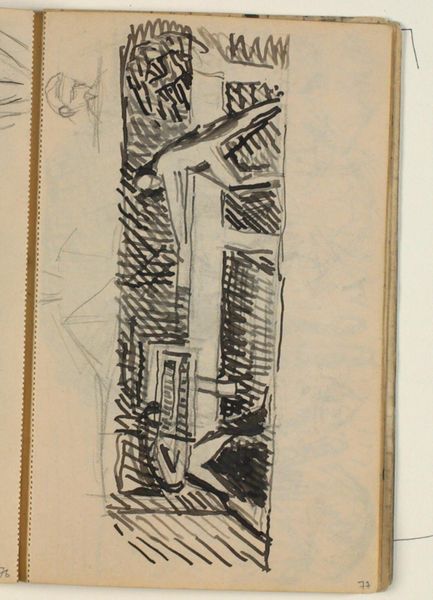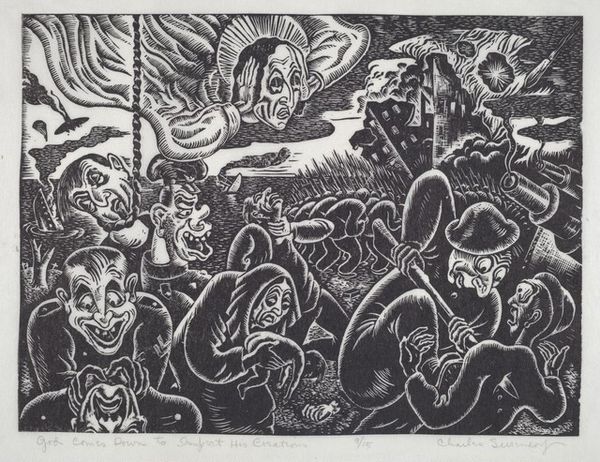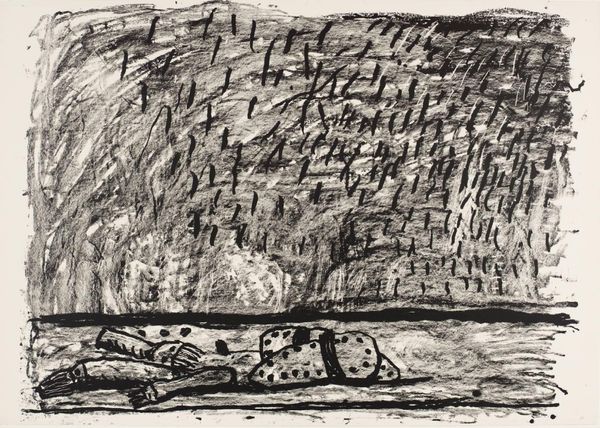
drawing, ink, graphite
#
drawing
#
narrative-art
#
landscape
#
figuration
#
ink line art
#
ink
#
geometric
#
abstraction
#
graphite
#
russian-avant-garde
Copyright: Public domain
Editor: This is Pavel Filonov's "Landscape with Two Animals," made in 1915 using ink and graphite on paper. It’s surprisingly geometric. All those angular shapes feel…deliberate. What do you make of it? Curator: It strikes me as less about capturing an idyllic scene and more about dissecting the very act of perceiving one. Look closely at the lines: harsh, repetitive, almost industrial. They feel closer to diagrams than descriptions. How might the mass production happening at the time influenced this? Editor: I hadn’t thought about it that way! So, you're suggesting the mechanical quality reflects industrial processes infiltrating even how artists visualized nature? Curator: Precisely. And consider the materials. Ink and graphite – readily available, inexpensive. Filonov wasn't employing luxurious oils, but using basic tools, echoing a focus on accessible production. This challenges art world hierarchy, elevating simple material and labor, which typically devalues the social class doing such jobs. Notice how every element, from the animals to the landscape itself, is fractured into these constituent parts. Does it make you think about anything related to labor? Editor: I'm just wondering about accessibility in terms of labor...and that also the artist took time to focus on such 'plain' resources around them as they exist, making the familiar, unfamiliar. That's true—I get a sense of deconstruction. It is as if he's broken down each element of the landscape to study them at the fundamental material level. So, for me, what has stuck is considering art making being more that the sum of all of its available parts... Curator: Absolutely. Art then becomes not just a depiction, but an investigation into its own making and material origins within a socioeconomic and historic context. It definitely opens a world for creative practices outside what's expected and challenges perceptions.
Comments
No comments
Be the first to comment and join the conversation on the ultimate creative platform.
